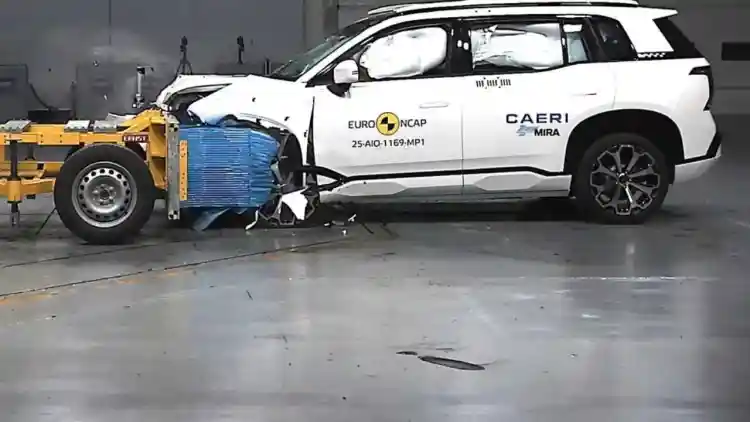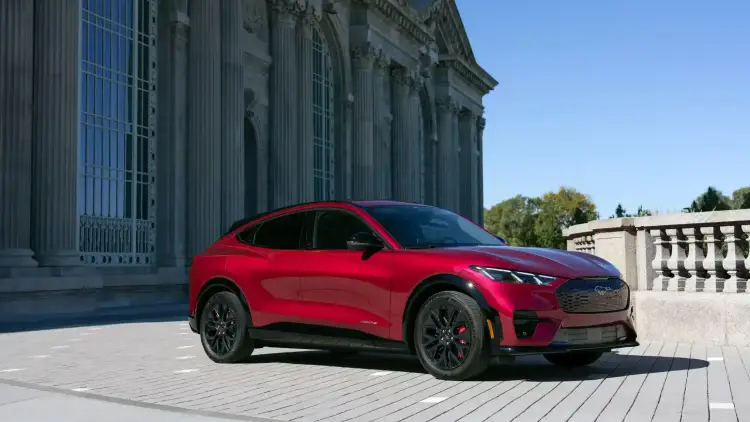- Immediate Steps to Take After an Electric Vehicle Accident
- Why Electric Vehicle Accidents Are Different
- Key Safety and Risk Factors
- Dealing with Post-Accident Formalities
- Exploring Electric Vehicles' Built-In Safety Features
- Frequently Asked Questions (FAQ) About Electric Vehicle Accidents
- Final Thoughts
Electric vehicles (EVs) are becoming increasingly common in today’s world. While they offer many benefits, from environmental friendliness to cutting-edge tech features, accidents involving EVs require special care and understanding. Whether you’re a seasoned EV driver or new to owning one, understanding the unique challenges of EV accidents can help you stay prepared and safe on the road.
Immediate Steps to Take After an Electric Vehicle Accident
When an accident happens, your first priority should always be safety. Here's what to do if you're involved in a collision with your EV:
Step-by-Step Safety Actions
Turn Off the Vehicle: Ensure the car is powered down completely. This reduces the risk of electrical hazards.
Inspect the Scene: Look for sparks, smoke, or unusual smells near the vehicle. Pay attention to spilled fluids, which can be dangerous if they come from the battery pack or high-voltage components.
Move Away from the Vehicle: If there are visible risks such as smoke or fire, evacuate all passengers and stand at least 50 feet away.
Contact Emergency Services: Inform responders that it’s an electric vehicle. Be clear about any visible damage, smells of smoke, or leaks.
Why Electric Vehicle Accidents Are Different
Electric vehicles function differently from traditional gas-powered cars, especially when accidents occur. Understanding these distinctions can help you make informed decisions.
High-Voltage Risks
EVs operate using high-voltage lithium-ion batteries, which can be dangerous if damaged. Touching exposed cables or battery components can cause severe injuries.
Delayed Fire Risks
A damaged EV battery may become unstable over time, leading to fire risks hours or even days after the collision. This makes proper post-accident storage critical.
Key Safety and Risk Factors
Accidents involving EVs can lead to challenges specific to their design. Recognizing these challenges can help you take precautions and seek proper help.
Battery Fires After Impact
A compromised EV battery can cause thermal runaway, a rapid overheating process that results in intense fires. Unlike fires from fuel cars, EV battery fires require substantial water or specialized methods to extinguish.
Some fires may ignite long after the initial crash due to hidden internal damage in the battery pack. Always monitor the vehicle for signs of trouble after an accident.
Best Practices for Handling Damaged EVs
Inform towing companies that the vehicle is electric. They may need equipment suited for high-voltage vehicles to ensure safe handling.
Store the EV far from buildings or other vehicles, ideally at least 50 feet away to minimize fire risks.
Repairs can often be completed only at certified EV dealers or service providers, due to the specialized tools and knowledge required.
Dealing with Post-Accident Formalities
After the emergency is stabilized, many drivers wonder what to do next regarding insurance claims and repairs. Here’s what you need to know:
Insurance Claims for Electric Vehicles
Notify your insurance provider immediately and specify it’s an electric vehicle accident. This ensures they understand the potential complications and higher repair cost.
Keep in mind EV insurance claims may involve higher expenses due to the complexity of battery repairs or replacements.
If your EV is declared totaled, the value typically reflects regional EV market factors.
Health and Wellbeing
Even if you feel fine, seek medical attention after an EV accident. Injuries caused by crash forces might not be immediately apparent.
Mental health assistance can be beneficial too. Accidents can be traumatic events, and speaking to a professional might help you recover emotionally.
Exploring Electric Vehicles' Built-In Safety Features
Electric cars are designed with advanced safety features that aim to reduce both accidents and injuries. Familiarize yourself with some of these innovations to drive with confidence:
Key EV Safety Features
Automatic emergency braking systems help prevent collisions by detecting obstacles and applying brakes.
Lane-departure warnings and lane-assist technologies reduce the risk of drifting into other lanes.
Battery shield structures protect passengers from impacts affecting high-voltage systems.
Multiple airbags and reinforced cabin designs provide added safety in case of collision.
Frequently Asked Questions (FAQ) About Electric Vehicle Accidents
Are EV battery fires common in accidents?
Electric vehicle fires are less frequent than those in gasoline cars, but they are more challenging to extinguish if ignited. Battery damage is the main cause.
Is it safe to approach a crashed EV?
It’s essential to stay away from damaged EVs. High-voltage components may still be live, posing serious risks to untrained individuals. Wait for professionals to assess the situation.
How do insurance claims differ for EV accidents?
Insurance claims for EVs often involve higher costs for repairs due to specialized components and labor. Always clarify that the incident involves an electric vehicle when making a claim.
What should I do if my EV emits smoke after a minor collision?
Move away from the vehicle immediately, regardless of the severity of the collision. Call emergency services and specify it’s an EV. Smoke signals potential battery damage, which could lead to fire.
Final Thoughts
As electric vehicles continue to evolve, it’s vital for drivers to understand how to respond in accident scenarios effectively. By taking the precautions outlined here, you can protect yourself, your passengers, and your vehicle.
Read More:
Ford Territory UAE:A Comprehensive Buyer’s Guide
Maruti Ciaz Interior:Smart Design & Comfort Features Explained













